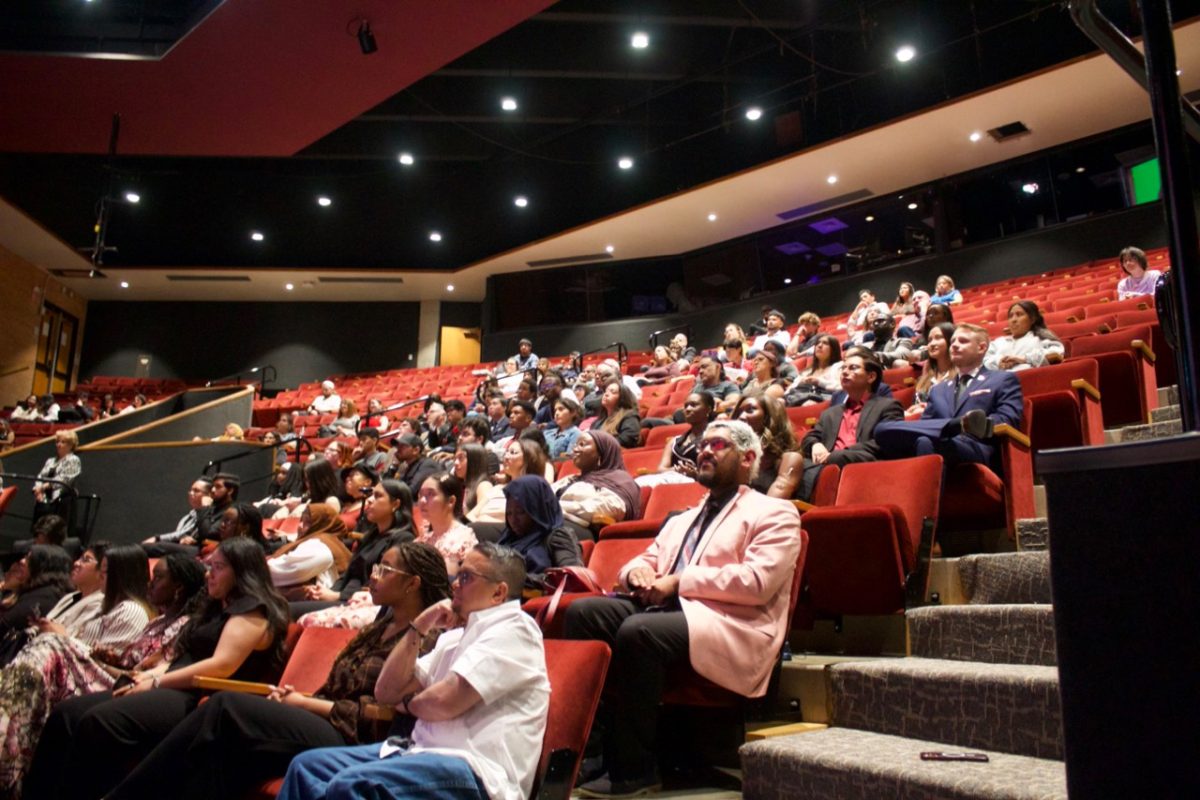By Joie’ Thornton
Staff Writer

The silence of the narrow confines of Texas Woman’s University’s Little Chapel-in-the-Woods is broken by applause as Carlo Pezzimenti and Brian Rowe walk into the single light fixed on the two benches at the center of the stage.
Pezzimenti bows and sits, settling into a world that, for him, holds no distractions. His eyes remain transfixed on his guitar, lovingly crafted by Ignacio Fleta and being played for the first time since its restoration in Spain.
This is the world of performance Pezzimenti has lived in for 45 years. Over the years, he has performed at Carnegie Hall and for the King of Spain in Madrid. Pezzimenti refers to these as “highlights in a performing career.” Even now, he experiences nervousness prior to his concerts. “I get butterflies whenever I perform,” he said.
Any such butterflies are unnoticeable once Pezzimenti settles his guitar on his lap in the Little Chapel-in-the- Woods. Following a brief tuning, his hands find their respective places on the guitar, the right hanging limp over the body and the left resting delicately high on the neck.
With his face inches from his left hand, Pezzimenti’s eyes follow his rapid fingering on the neck of the guitar. Notes combine into chords and reverberate off the stone floor, only to be quietly absorbed by the wooden- beamed ceiling.
It’s not until the third composition that Pezzimenti breaks the stream of music with words. As Rowe walked off the stage, Pezzimenti explained the background of the next set of movements, called “Eight Nocturnes,” which were composed by his friend Ernesto Garcia de Leon.
The eight movements, written to reflect the experiences of the night, were inspired by and composed for a former student of Pezzimenti’s. “It takes you to places you’ve never been. Whether that’s good or bad, well,” Pezzimenti said, trailing off as he eases into the guitar.
Pezzimenti strummed his guitar with no sheet music in front of him. He played through all eight movements, totaling more than 15 minutes, from memory. At times the notes were methodical and soothing, and at others, they came in unpredictable and jarring barrages. The different movements embodied the diversity of Flamenco guitar.
It is in this style of guitar that Pezzimenti has earned his notoriety. Growing up in the ’60s and ’70s, Pezzimenti said many of the kids his age wanted to learn guitar due to the rising popularity of rock and roll. It was because of peer pressure that he first picked up the guitar.
Yet, instead of following guitarists such as Jimi Hendrix or Eric Clapton, Pezzimenti found himself enamored by virtuoso classical guitarist Andrés Segovia. The acoustics of the hollow wood body, combined with Segovia’s unique approach of strumming the guitar with any part of the finger he could, created a style of music which Pezzimenti said stood out to him.
“I heard him [Segovia] play and, of course, it was very different from the rock world,” Pezzimenti said. “So when I heard that, I thought, ‘Oh my God, you can actually do all that with a guitar. That’s pretty amazing.’”
Pezzimenti’s style helps him connect with his audience, Octavio Gutierrez, Chair of the Music Department of Brookhaven College, said. He attributed this to Pezzimenti’s artistic approach to the music.
D Magazine shared a similar notion: “This man [Pezzimenti] makes music with his guitar that can only be described as heavenly. Pezzimenti tackles complex arrangements with a vocalist’s sense of timing.”
Pezzimenti said he tries not to place too much value on the accolades he has garnered over the years. He said the importance of his art is derived from the experience he produces for himself and others. “You hope you can say more and more with your music and be meaningful with it,” Pezzimenti said.













